Post by boscoe on Jul 16, 2006 16:17:02 GMT -5
This step by step guide was written by Mtech and originally posted in the General Forum.
For those interested in learning the basics of watch tinkering. I will start with how to remove a winding stem from a ETA watch. This step is useful when you have to replace the rubber O-rings that preserve the water resistance of your watch. The O-rings shown here are specific to the Poley Trip Lock (a watch I created), but the general idea is the same.
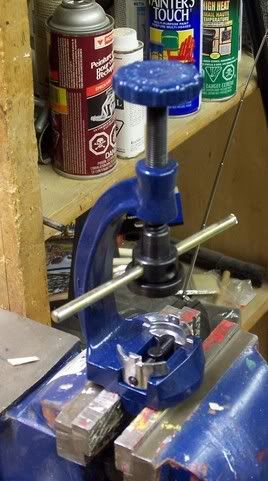
I use a LG case opener, this one is for the Rolex style backs. I have another LG tool for use on all the other 'notch' style case backs.
The project I am working on is the replacement of the stripped screw down crown threads on my Poley LE. A friend of mine has sold me some aftermarket parts, noticibly better quality than the original stuff. FYI the original stuff is on the left the Trip Lock crown has a far larger threaded diameter, and should last far longer too. ;D

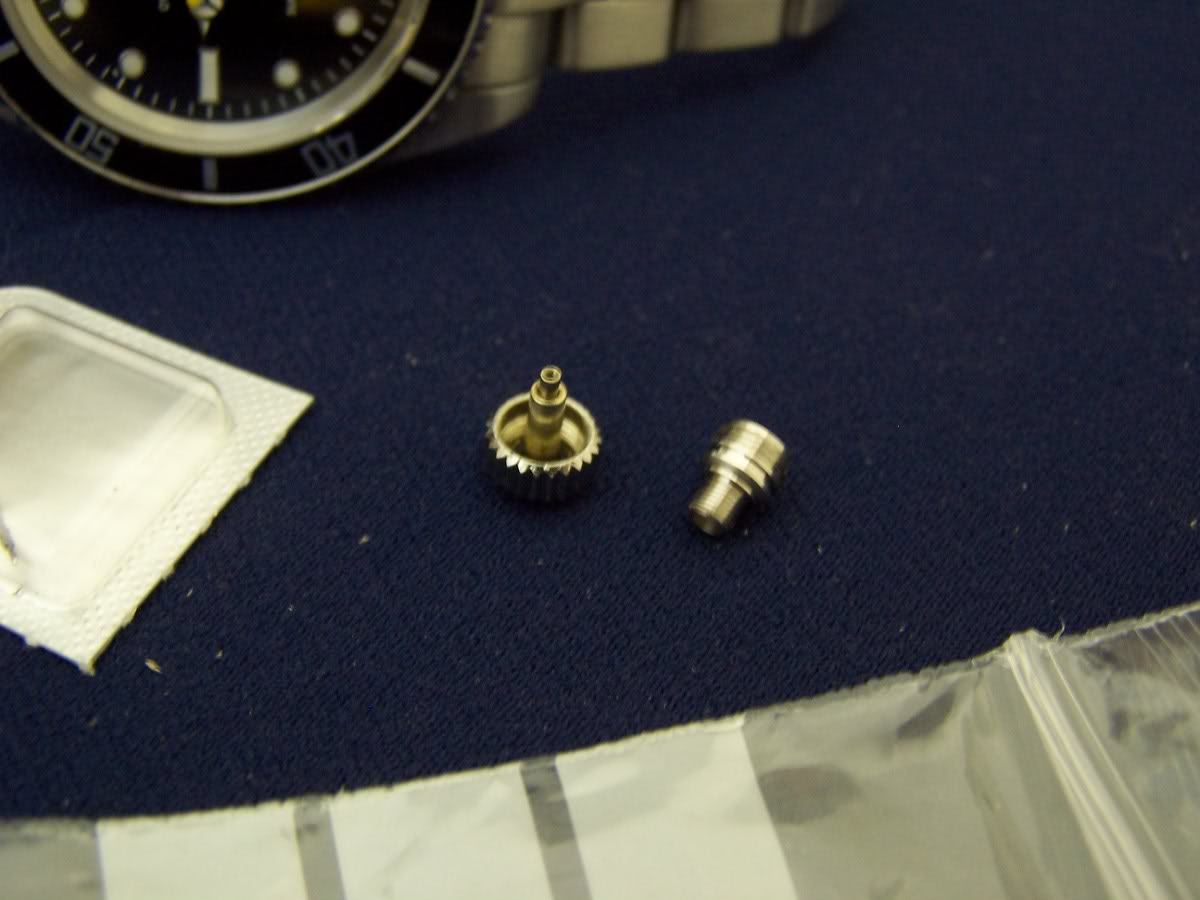
Here's the new crown, stem, and tube ~ about $ 60 Canadian for all these parts that would fit into a thimble !! such is the WIS hobby.
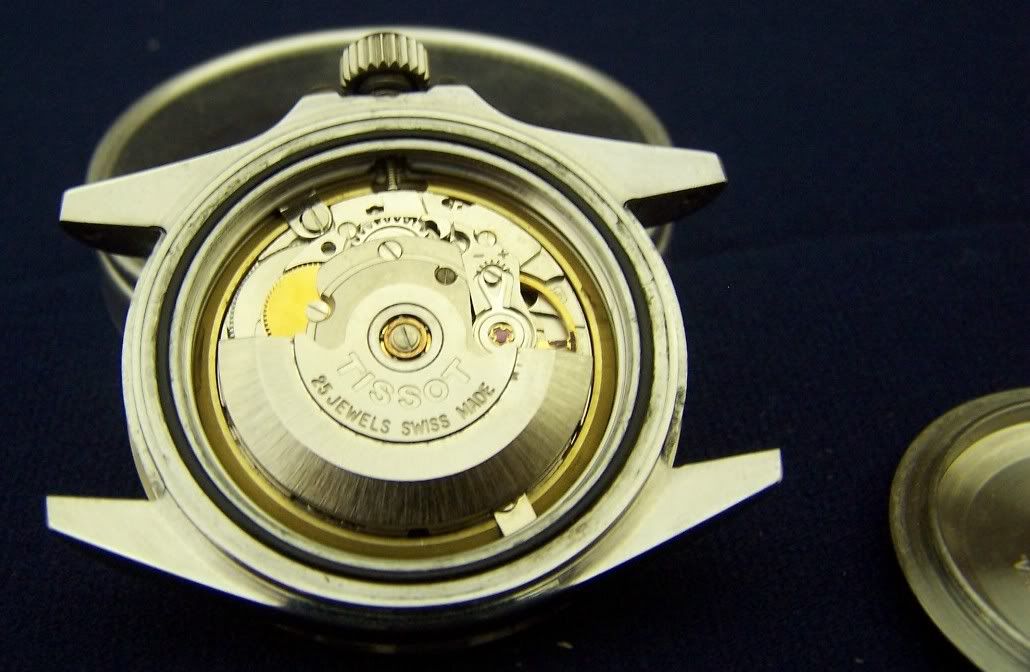
The bracelet is off, the back is removed. What's this? a Tissot?
Not likely that Mr. Tissot knew his name was inside the Poley, oh well.
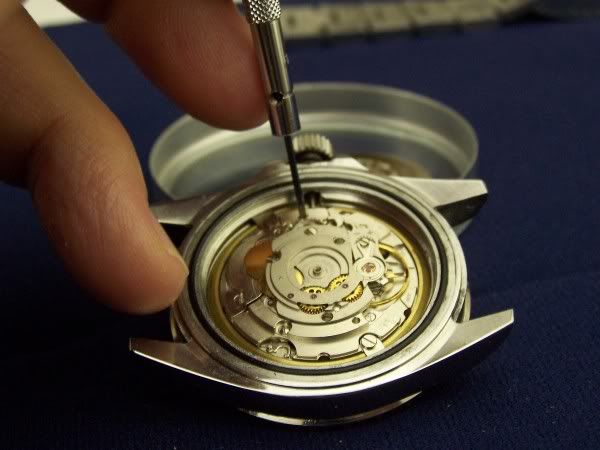
Here I have removed the winding rotor to make things easier for me, I have my small jewellers screwdriver inserted into the special slot, the crown is unscrewed, and once I depress the lever in the slot the crown comes out very easy. If you are just going to do the crown gaskets, the winding rotor can stay put.
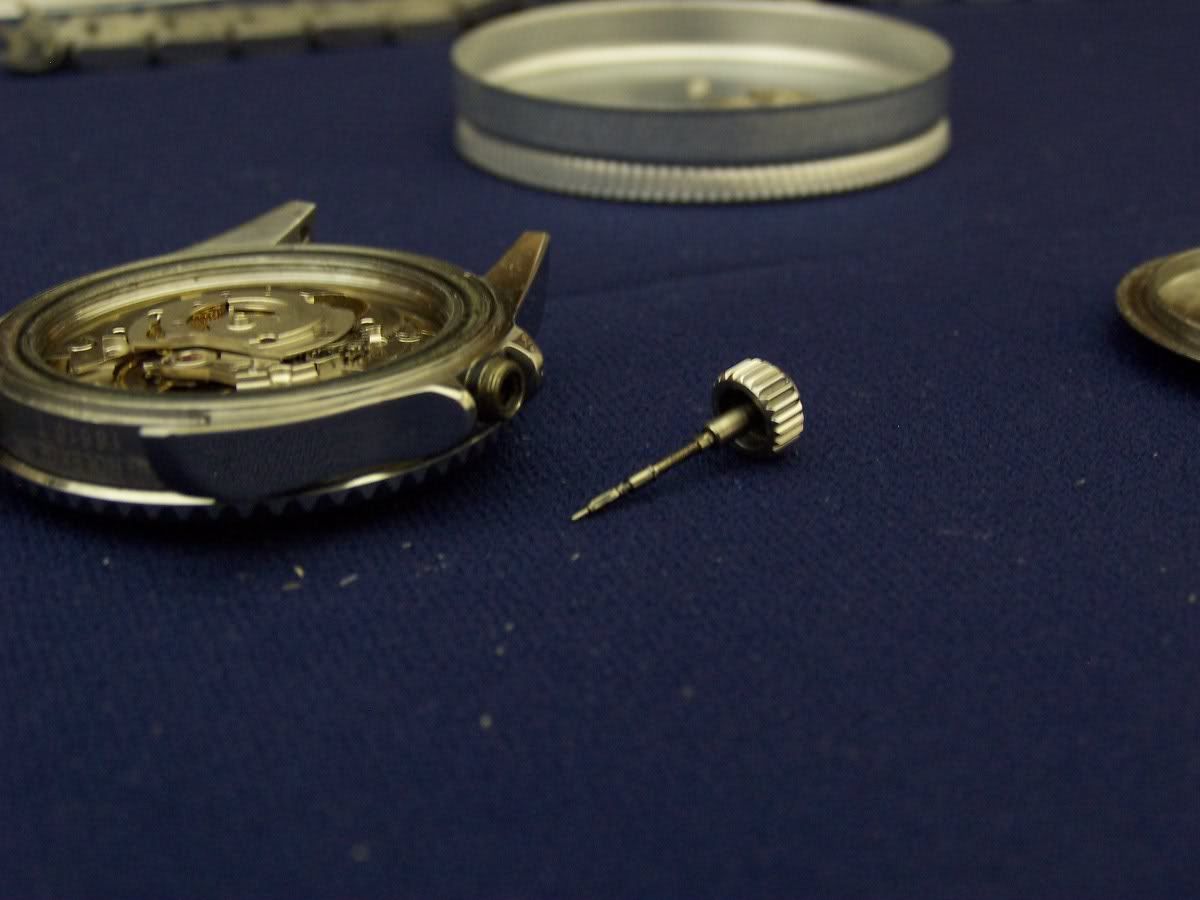
Ta da !!
In general, the method of retaining the crown within the movement is basically the same for most watches. You look for a lever, pushbutton, hole, that is in the vicinity of where the winding stem enters the movement. Sometimes you will only see what you need to push by looking closely as you push and pull out the crown, quartz watches are famous for this trick because they don't have a traditional winding stem "keyless works" area like a mechanical watch. Use caution, if you are using force, you are doing it wrong - STOP and explore with your 10x loupe.
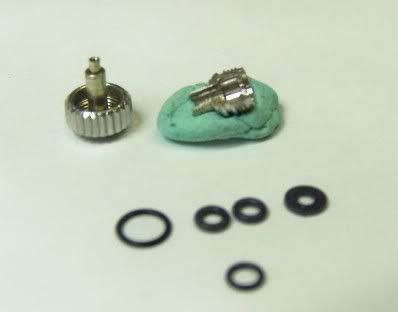
Here's a cut-a-way tube showing the area for the smallest diameter O-rings, This is a Trip Lock Crown system, it has more rubber parts than most screw down crowns, this doesn't necessarily make it better ~ just different.
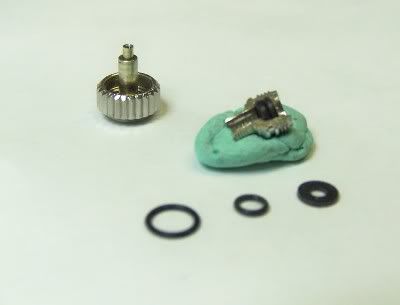
Here's the cut-a-way tube (anything for science eh?) with the 2 O-rings in place, neat eh? the largest O-ring goes on the outside of the new stem tube, the flat gasket goes inside the new crown. The Flat gasket makes the best seal against the end of the stem tube, the internal O-rings prevent water, dust from entering if it gets past the flat gasket. IMO the large external O-ring is just to keep the threads on the stem tube clean. Okay, what's the other O-ring for? that one is used to assist the stem tube to case seal ~ not important for you now if all you want is to replace the rubber pieces on your screw down crown.
that one is used to assist the stem tube to case seal ~ not important for you now if all you want is to replace the rubber pieces on your screw down crown.
The old O-rings on your stem will come out with the tip of a small
metal pick or screwdriver, usually 1 inside the tube itself, and 1 inside the actual crown. Replace with your new O-Ring parts, apply a thin coating of silicone grease to all rubber surfaces and re-install the crown & stem. When you place the Crown & Stem back into the case, it will slide into place with a little fiddling, remember : NO FORCE, just slight wiggling is usually all you need.
It will need to be pushed all the way in to lock it in place, try pulling it out, if you end up with the Crown & Stem in your fingers, you didn't get it to lock.
Now inspect the case back gasket, it shouldn't look crushed or damaged, if in doubt use a new one. Apply the silicone grease - sparingly to the gasket, push into place and re-install the back.
You did all this in a dust free work shop right? if not, check over all the visible movement surfaces with your 10x loupe looking for hair, dust, cookie crumbs (yes that one's for you boscoe) and get them out before you seal up the watch.
Note: the case back doesn't need to be torqued down like the lug nuts on your SUV. It needs to seal & compress the O-ring, but not so much that you tear the threads out of the case!!! So be careful, it's a watch not a HUMMER.
Okay now we get into the fun part, if you are only going to replace the rubber O-rings, the next steps are not applicable to your project. I hope this helps encourage you to try your own repairs, obviously you aren't going to do this while the watch is under warranty, or if it's a family heirloom. Use your judgement and if you think you can do this, you probably can.
For those interested in learning the basics of watch tinkering. I will start with how to remove a winding stem from a ETA watch. This step is useful when you have to replace the rubber O-rings that preserve the water resistance of your watch. The O-rings shown here are specific to the Poley Trip Lock (a watch I created), but the general idea is the same.

I use a LG case opener, this one is for the Rolex style backs. I have another LG tool for use on all the other 'notch' style case backs.
The project I am working on is the replacement of the stripped screw down crown threads on my Poley LE. A friend of mine has sold me some aftermarket parts, noticibly better quality than the original stuff. FYI the original stuff is on the left the Trip Lock crown has a far larger threaded diameter, and should last far longer too. ;D


Here's the new crown, stem, and tube ~ about $ 60 Canadian for all these parts that would fit into a thimble !! such is the WIS hobby.

The bracelet is off, the back is removed. What's this? a Tissot?
Not likely that Mr. Tissot knew his name was inside the Poley, oh well.


Here I have removed the winding rotor to make things easier for me, I have my small jewellers screwdriver inserted into the special slot, the crown is unscrewed, and once I depress the lever in the slot the crown comes out very easy. If you are just going to do the crown gaskets, the winding rotor can stay put.

Ta da !!
In general, the method of retaining the crown within the movement is basically the same for most watches. You look for a lever, pushbutton, hole, that is in the vicinity of where the winding stem enters the movement. Sometimes you will only see what you need to push by looking closely as you push and pull out the crown, quartz watches are famous for this trick because they don't have a traditional winding stem "keyless works" area like a mechanical watch. Use caution, if you are using force, you are doing it wrong - STOP and explore with your 10x loupe.

Here's a cut-a-way tube showing the area for the smallest diameter O-rings, This is a Trip Lock Crown system, it has more rubber parts than most screw down crowns, this doesn't necessarily make it better ~ just different.

Here's the cut-a-way tube (anything for science eh?) with the 2 O-rings in place, neat eh? the largest O-ring goes on the outside of the new stem tube, the flat gasket goes inside the new crown. The Flat gasket makes the best seal against the end of the stem tube, the internal O-rings prevent water, dust from entering if it gets past the flat gasket. IMO the large external O-ring is just to keep the threads on the stem tube clean. Okay, what's the other O-ring for?
 that one is used to assist the stem tube to case seal ~ not important for you now if all you want is to replace the rubber pieces on your screw down crown.
that one is used to assist the stem tube to case seal ~ not important for you now if all you want is to replace the rubber pieces on your screw down crown. The old O-rings on your stem will come out with the tip of a small
metal pick or screwdriver, usually 1 inside the tube itself, and 1 inside the actual crown. Replace with your new O-Ring parts, apply a thin coating of silicone grease to all rubber surfaces and re-install the crown & stem. When you place the Crown & Stem back into the case, it will slide into place with a little fiddling, remember : NO FORCE, just slight wiggling is usually all you need.
It will need to be pushed all the way in to lock it in place, try pulling it out, if you end up with the Crown & Stem in your fingers, you didn't get it to lock.

Now inspect the case back gasket, it shouldn't look crushed or damaged, if in doubt use a new one. Apply the silicone grease - sparingly to the gasket, push into place and re-install the back.
You did all this in a dust free work shop right? if not, check over all the visible movement surfaces with your 10x loupe looking for hair, dust, cookie crumbs (yes that one's for you boscoe) and get them out before you seal up the watch.
Note: the case back doesn't need to be torqued down like the lug nuts on your SUV. It needs to seal & compress the O-ring, but not so much that you tear the threads out of the case!!! So be careful, it's a watch not a HUMMER.
Okay now we get into the fun part, if you are only going to replace the rubber O-rings, the next steps are not applicable to your project. I hope this helps encourage you to try your own repairs, obviously you aren't going to do this while the watch is under warranty, or if it's a family heirloom. Use your judgement and if you think you can do this, you probably can.

